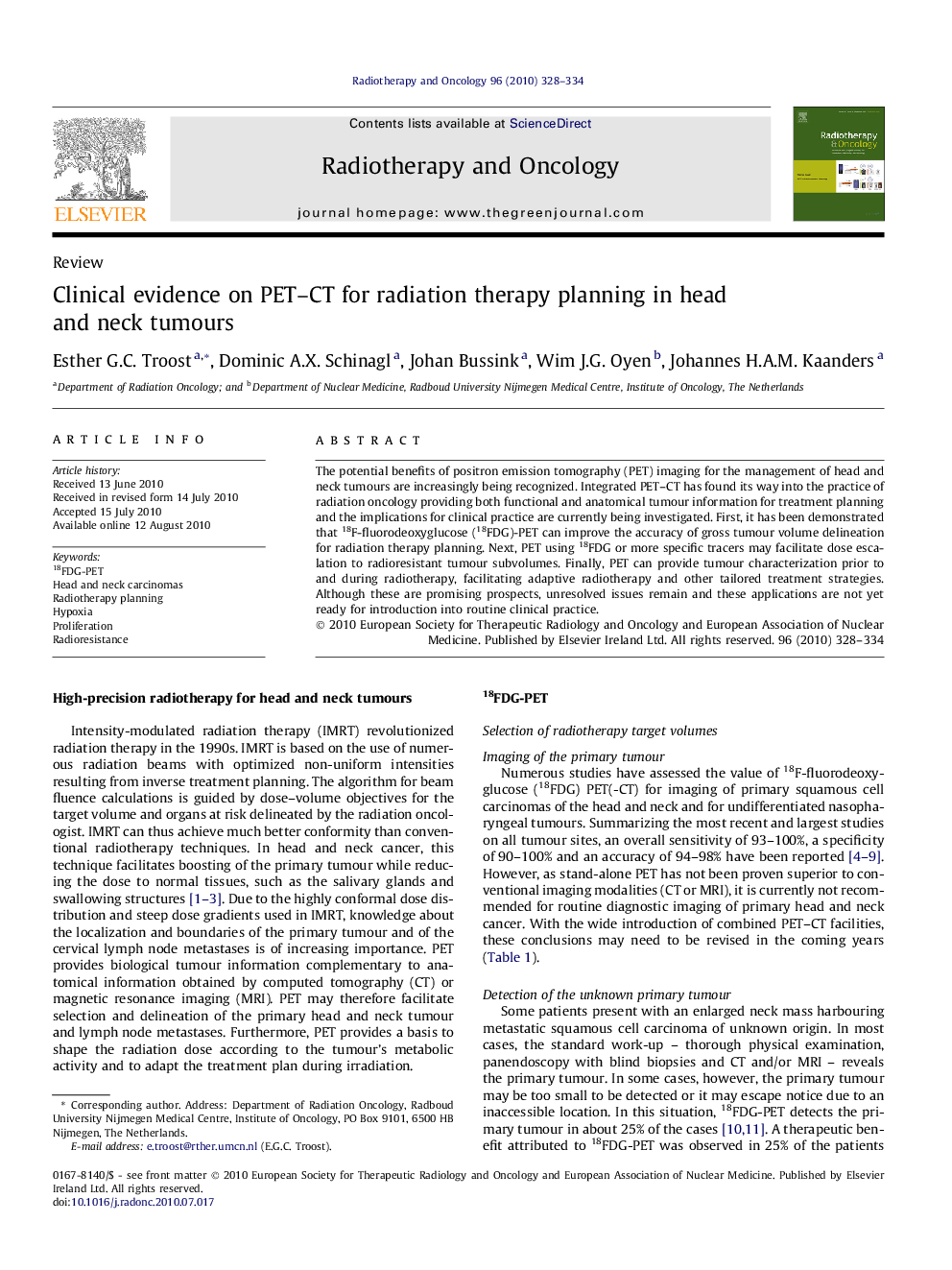| Article ID | Journal | Published Year | Pages | File Type |
|---|---|---|---|---|
| 2159384 | Radiotherapy and Oncology | 2010 | 7 Pages |
The potential benefits of positron emission tomography (PET) imaging for the management of head and neck tumours are increasingly being recognized. Integrated PET–CT has found its way into the practice of radiation oncology providing both functional and anatomical tumour information for treatment planning and the implications for clinical practice are currently being investigated. First, it has been demonstrated that 18F-fluorodeoxyglucose (18FDG)-PET can improve the accuracy of gross tumour volume delineation for radiation therapy planning. Next, PET using 18FDG or more specific tracers may facilitate dose escalation to radioresistant tumour subvolumes. Finally, PET can provide tumour characterization prior to and during radiotherapy, facilitating adaptive radiotherapy and other tailored treatment strategies. Although these are promising prospects, unresolved issues remain and these applications are not yet ready for introduction into routine clinical practice.
